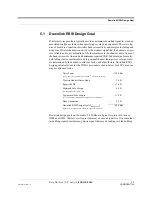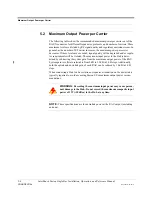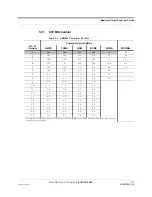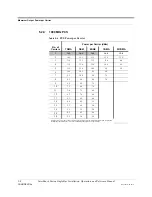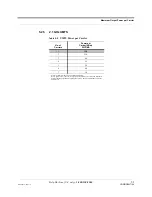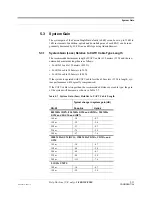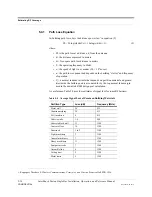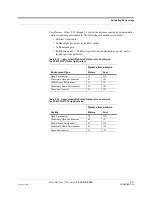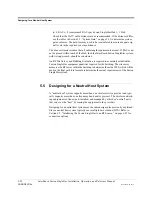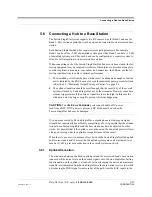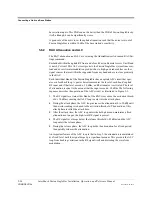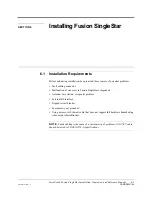
Estimating RF Coverage
5-16
InterReach Fusion SingleStar Installation, Operation, and Reference Manual
CONFIDENTIAL
D-620605-0-20 Rev A
Table 5-11 shows estimated PLS for various environments that have different “clut-
ter” (that is, objects that attenuate the RF signals, such as walls, partitions, stairwells,
equipment racks, and so.).
By setting the path loss to the maximum allowable level (PL = APL), equation (3) can
be used to estimate the maximum coverage distance of an antenna connected to an
RAU, for a given frequency and type of in-building environment.
d = 10^((APL - 20log
10
(4
π
f/c))/PLS)
(4)
Table 5-11
Estimated Path Loss Slope for Different In-Building Environments
Environment Type
Example
PLS for
800/850/900 MHz
PLS for
1800/1900 MHz
Open Environment
very few RF obstructions
Parking Garage, Convention Center
33.7
30.1
Moderately Open Environment
low-to-medium amount of RF
obstructions
Warehouse, Airport, Manufacturing
35
32
Mildly Dense Environment
medium-to-high amount of RF
obstructions
Retail, Office Space with approxi-
mately 80% cubicles and 20% hard
walled offices
36.1
33.1
Moderately Dense Environment
medium-to-high amount of RF
obstructions
Office Space with approximately
50% cubicles and 50% hard walled
offices
37.6
34.8
Dense Environment
large amount of RF obstructions
Hospital, Office Space with approxi-
mately 20% cubicles and 80% hard
walled offices
39.4
38.1


